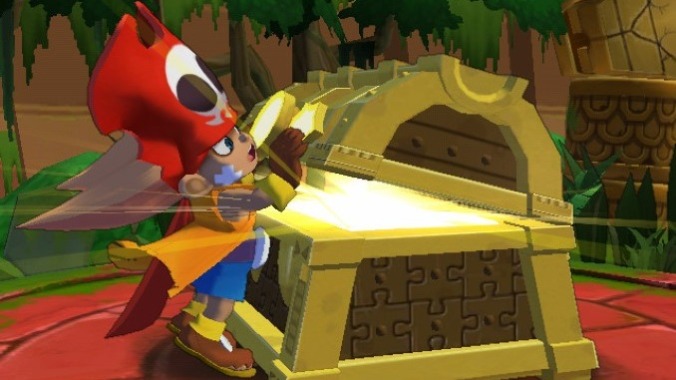
The Wii hasn’t had its critical reevaluation yet. The GameCube has already had its retrospective moment, and the Wii U kind of jumped ahead in line thanks to so many (but not all) of its killer exclusives ending up as killer deluxe edition Switch games. The Wii, though, has been mostly left waiting for its turn.
It’s not that the Wii was missing great games. It’s that people didn’t buy them. They didn’t want them, for myriad reasons. Nintendo’s blue ocean strategy was great at getting consoles into the hands of families and people that maybe hadn’t considered owning one before, and their concession on the graphical front—where they sacrificed going for the highest fidelity in favor of attempting to make something Different—has certainly paid off in the long run. But with the Xbox 360 and PlayStation 3 showing off hi-def gaming and robust online platforms for multiplayer and everything feeling so new, new, new in a way different than what Nintendo was after, well, the Wii’s games didn’t always get the spotlight they deserved. Even Nintendo’s own games sometimes suffered from this problem.
So, let’s get this critical reevaluation going ourselves. And we’re not going to do it by highlighting Nintendo games, either. You know the score there, with much of the first-party stuff being at least worth investigating (outside of, like, Metroid: Other M), and you already know how I feel about Sin and Punishment: Star Successor, anyway. Let’s go all third-party, all Wii exclusives, and talk about the games that, like the Wii’s reputation for games in general, deserve a second chance in the present.
Blast Works: Build, Trade, Destroy
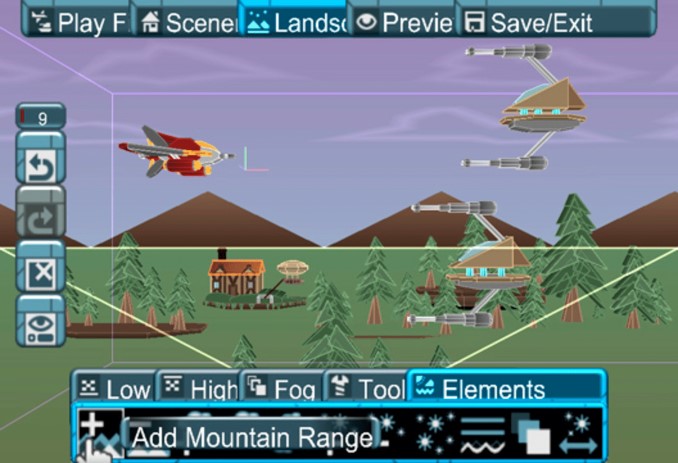
Developer: Budcat Creations
Publisher: Majesco Entertainment
2008
Blast Works is a shoot ‘em up with a simple but ridiculous premise: what if all the stuff you shot down could become part of your ship simply by crashing into it afterward? It’s a horizontal shooting game where you start off with one of a few different, smaller ships, and those small ships end up being huge by the end of the stage, as the enemies you defeat and run into become part of your ship. They’re part armor, part firepower, as their guns are added to yours, making for some ridiculously unwieldy—but effective!—ships.
Blast Works is based on a 2004 free game developed by Kenta Cho known as TUMIKI Fighters. It used that game as a premise and ran with it, and oh, Budcat Creations also added in a bunch of Cho’s other freely available shooters as unlockables, too. It came with a level editor, online leaderboards, and also probably more people (positively) reviewing it than buying it in stores. Luckily, you can find Cho’s games available—still for free—but this specific iteration of them is currently lost to time. If you’ve still got a Wii and like, $5-6, though, you can find out for yourself, at least.
Kororinpa: Marble Mania

Developer: Hudson Soft
Publisher: Hudson Soft
2007
Kororinpa was a launch title for the Wii in Japan, one that used the gyroscope in the Wii Remote to let you move a marble around mazes based on BRIO’s wooden toy marble game, Labyrinth. Balancing speed and accuracy is paramount to your success: there are nearly 50 levels to work through, all with special gems to collect that require more than luck to actually acquire, and you’ll have to figure out how to do things like, turn the floors into walls or ceilings by quickly manipulating the playing area with the Wii Remote. Oh, and you can eventually unlock mirror versions of every stage, as well.
Kororinpa didn’t get exceptional reviews at the time, but that might be owed at least in part to the genre in general. “A marble maze game” as a launch title isn’t all that exciting compared to, say, a new Zelda that had been delayed specifically to coincide with the Wii’s launch and drum up interest in it. It’s great fun, however, and superior to its sequel, which some fans will tell you messed up the physics of the first in some aggravating ways.
Fragile Dreams: Farewell Ruins of the Moon
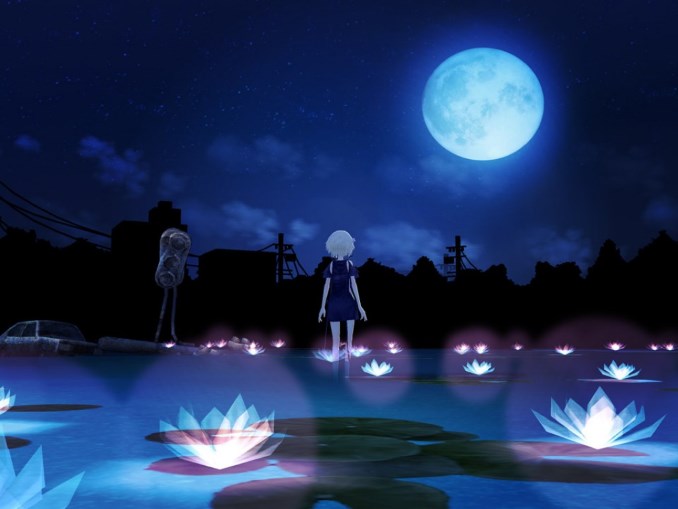
Developer: Namco, Tri-Crescendo
Publisher: Xseed
2010
Fragile Dreams is a game about loneliness, and attempts to confront that loneliness. Everything in the game reflects these facts back at you; they’re an inescapable part of the experience. Of course, plenty of people did escape it by not buying it in the first place, in part owing to the release schedule around it—Fragile Dreams shared March 2010 in North America with Final Fantasy XIII, Street Fighter IV, God of War III, and the expansion to Dragon Age: Origins—so even before you get to the “it’s weird and tough to explain” part of the sales pitch, people had already plopped down their money elsewhere.
It’s not a perfect game, but it’s one everyone should experience at least once. It’s a post-apocalyptic tale about a young boy desperate to form connections in that world, who meets up with others who are hoping to feel the same, or are afraid of feeling the same, or are afraid of feeling anything at all, since hope itself can be dangerous. Most of your interactions are with people who have already moved on, either physically or spiritually speaking, with Seto, the protagonist, attempting to grant some final requests of the departed after he comes upon them. This is a world that looks empty, but it is anything but. This world, like Fragile Dreams itself, is flawed yet beautiful.
Zack & Wiki: Quest for Barbaros’ Treasure
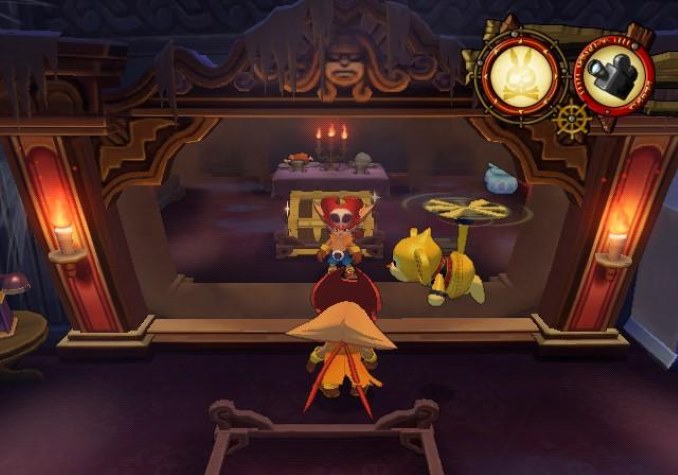
Developer: Capcom
Publisher: Capcom
2007
Capcom threw a ton of support behind the Wii, and one of the earliest instances of this came in the form of an adventure puzzle title known as Zack & Wiki. Zack is an adorable little pirate dude, and Wiki is his monkey pal who bears more than a passing resemblance to Mega Man Volnutt’s monkey pal from Mega Man Legends. You use the Wii Remote for pointing and clicking and for object manipulation to solve clever puzzles and progress the plot—it doesn’t play just like a classic LucasArts’ game by any means, but it feels closer to that in a lot of ways than Capcom’s Phoenix Wright games ever did. You’re scored on how many attempts it takes you to complete a puzzle, how clever your actions were for solving the puzzles, and how difficult the puzzle in question was in the first place. There’s clear replayability here, on top of it being just so fun to get through the first time regardless of skill, and oh, it’s also just an attractive looking game with an eye-catching style, to boot.
Sadly, despite being rightfully beloved by critics, Zack & Wiki was a complete flop at retail. So, despite the ambition present in subtitling the first game in a series, this ended up being the lone entry. Still! This would be a classic if anyone had bothered to play it in the first place, and if given a second opportunity, it could be more successful the second time around than it was the first.
The Munchables
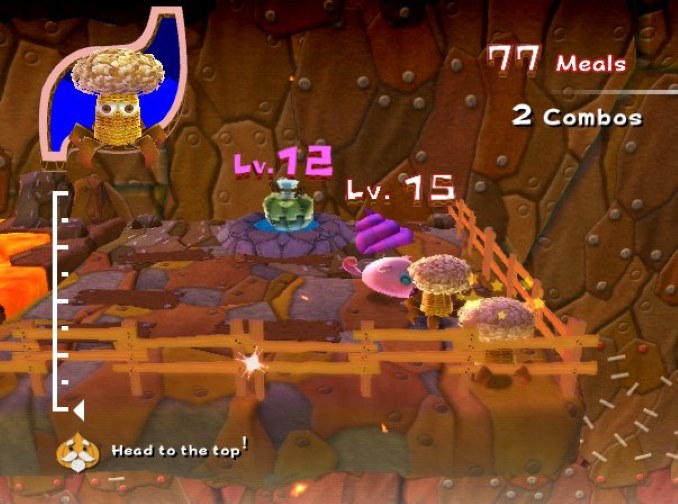
Developer: Now Production
Publisher: Namco Bandai
2009
Unlike the Xbox 360 and the Playstation 3, the Wii didn’t end up with a Katamari game. Instead, Namco made a different game about growing bigger and traversing an ever-shrinking world with The Munchables. Now Production, a developer with a history of taking on established series to produce sequels for them stretching back into the ‘80s and ‘90s who also just so happened to be the co-developer of the original Katamari Damacy, We Love Katamari, and Beautiful Katamari, produced The Munchables as a budget Wii exclusive.
Instead of rolling around a ball and sticking a growing list of ever-bigger objects onto it, in The Munchables, the world is invaded by aliens. The aliens just so happen to look like food—think building-sized carrots and what have you—so it’s your job to unleash the ancient art of eating them all to death until you can grow large enough in size to take on the enormous alien boss kaiju, which also look like food. It’s goofy, it’s cute, and it’s fun while it lasts. Why it hasn’t been re-released as a budget downloadable game in the present, where it’ll stand a better chance than it ever did as a $30 retail game for a system people weren’t buying enough non-Nintendo games for, is beyond me.
Opoona

Developer: Artepiazza
Publisher: Koei
2008
Poor Opoona. Not only is his game based around his family’s spaceship being shot out of the sky, scattering them all over a planet that’s foreign to them and causing him to discover them and their condition one-by-one but also integrate himself with the local populace to survive there and work toward that goal, but it also released in Japan on the same day as Super Mario Galaxy. While neither Artepiazza nor Koei saw that as an issue given Opoona was intended to have a much different audience, they didn’t count on the fact that Mario is basically for everyone, especially when said Mario is as good as Super Mario Galaxy ended up being. With little marketing momentum and excitement built up from its Japanese release, its international one was also a bust. Despite that, though, and reviews that suggest otherwise, Opoona is a high-quality game, a real “if you know you know” situation.
The game can be controlled exclusively with the Nunchuk, if you want to. Battles are basically a modified version of an active time battle system, where they’re turn-based-ish with a meter that refills and allows you to choose your next action when ready, but attacks can be interrupted and therefore fail, as well. Basically, just because it’s your turn doesn’t mean it’s going to land, but you can also use this to your advantage and interrupt the attack animation of a foe with a well-timed and well-placed shot from your Bon-Bon—the floating ball above your head that’s also a weapon. (It’s a whole thing.) It’s an engaging battle system, and the difficulty does increase as you go, as more is expected of you both in terms of speed and accuracy, but also in using your skills and deploying your eventual additional party members in effective ways. That’s just part of the game, however: you’re going to spend a ton of time working on what is basically a modified job system, where everything is normal for you in battle, but you learn more and more skills and unlock the ability to go new places and do new things by adding on “licenses” that increase your utility to the world. You’re looking for your injured parents, you’re looking to head to the planet’s paradise-based retirement home as quickly as you can, and you also want to find out who even attacked you in the first place.
It’s a weird one, but that’s said with the utmost respect. The developers behind many a Dragon Quest game and port knew what they were doing with a totally original role-playing game, who could have guessed?
Trauma Center: Second Opinion; Trauma Center: New Blood; Trauma Team
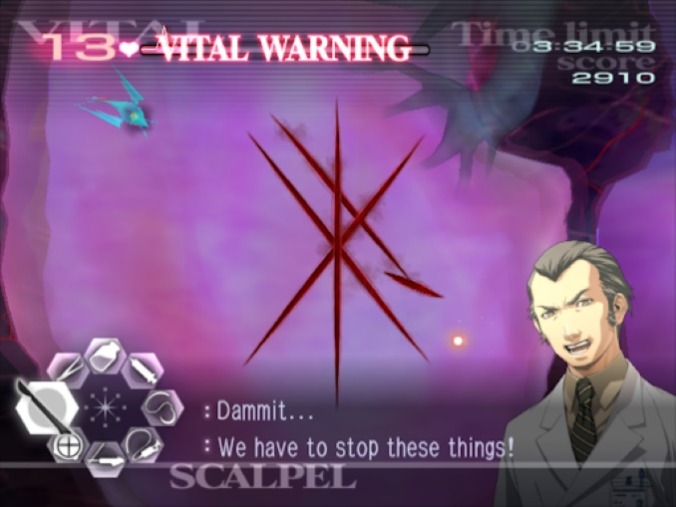
Developer: Atlus
Publisher: Atlus USA
2006, 2007, 2010
This is cheating a little bit, since Second Opinion is a Wii remake of the original DS Trauma Center: Under the Knife, but that’s fine. It still deserves another chance along with its Wii-exclusive sequels. Have you ever played a soap opera-level dramatic game where you’re a surgeon who maybe has some kind of time-slowing superpowers, and also has to eventually fight off a cult hoping to infect the world through bioterrorist attacks with a disease that would kill off “weaker” people and restore the balance of natural selection to the world? If your answer to this is yes, then you already know why getting Trauma Center games back out there is necessary. And if you’re a no, well, my friends, do I have the game series for you.
The sequel, New Blood, is great in its own right, but Trauma Team changes things up by causing you to perform in far more roles than as just a surgeon. You can’t go wrong with any of them, outside of the fact that none of them are available anywhere, I mean.
Final Fantasy Crystal Chronicles: The Crystal Bearers

Developer: Square Enix
Publisher: Square Enix
2009
Crystal Chronicles served as the reopening of Nintendo and Square Enix’s relationship: a multiplayer action RPG that utilized both the GameCube and the Game Boy Advance’s ability to connect with it to create some quality couch co-op adventuring. Square would go on to experiment with this branding for a series that remained a Nintendo exclusive for some time—in addition to the straight sequel for the Wii and DS, there were also the WiiWare titles My Life as a King where you order adventures around on missions and wait for them back home in the kingdom you’re ruling and growing, and My Life as a Darklord, a tower defense where you try to keep adventures from ascending your tower by building obstacles and traps.
The Crystal Bearers also skipped the original’s identity of the franchise, and serves as a single-player action-adventure game where you can manipulate objects through psychokinetic gravity powers. It’s not at all what anyone was expecting, and suffered a bit for that both at retail and in the eyes of critics, but the game has its fans: the people who like it love it, and if given another chance, it could pick up some new admirers.
Deadly Creatures
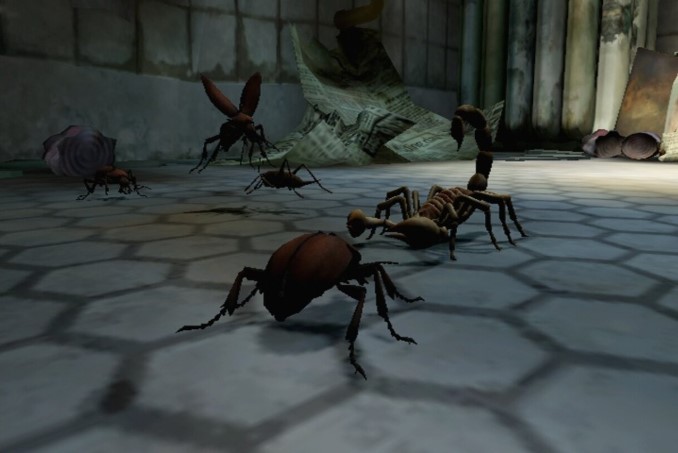
Developer: Rainbow Studios
Publisher: THQ
2009
Some of THQ’s Wii titles, like de Blob, ended up losing their exclusive status and were ported elsewhere. Deadly Creatures, however—a game in which you play as both a tarantula and a scorpion in what was a “realistic” attempt at a very violent day-in-the-life of both creatures—remains locked on the Wii. This is another that had higher expectations than it could reach upon release given its concept and the general lack of “mature” games on the Wii, but there’s still plenty to enjoy here: the scorpion is more direct action and violence, the tarantula, given the creature’s fragility, more stealth-focused. Shrinking big monster battles down isn’t a bad concept, so long as you get to play as the diminutive monsters like you do here.
And also there’s voice work by Billy Bob Thornton and Dennis Hopper, which absolutely shouldn’t be let go to waste. Put those dudes looking for gold in the background of what you’re up to as a scorpion and tarantula back on the market.
The Sky Crawlers: Innocent Aces
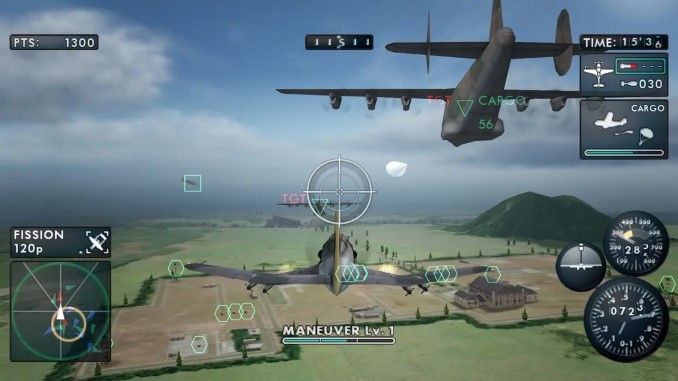
Developer: Project Aces, Access Games
Publisher: Xseed
2010
Another title that Namco didn’t bother bringing to North America themselves but Xseed scooped up, The Sky Crawlers is an air combat title developed by Project Aces, aka the Ace Combat folks, and is based on the 2008 animated movie, The Sky Crawlers. While Nintendo would eventually get some Ace Combat love on its systems, at this point in time, that hadn’t happened yet, so Xseed bringing over Not Ace Combat by the Ace Combat folks felt significant. It features animated cutscenes by the same company, Production I.G., that worked on the film, and is notable not just for its quality, but also that you switch which hands you’re holding the Wii Remote and Nunchuk in compared to most titles: this was done so that the pair could better simulate a flight stick and throttle.
You can use traditional controls if you prefer, as well, but there’s also more to this game than control schemes. It’s story-heavy, given it’s based on a film that’s based on a book (the game also inspired a manga, too), but Project Aces also incorporated some newer elements into this that would make their way into Ace Combat itself. The Tactical Maneuver Command system was basically a way to perform some automatic movements in the air, assuming your craft was actually in a position to perform them, and those behaviors ended up in titles like Ace Combat: Assault Horizon Legacy on the 3DS a few years later. It’s kind of a missing link in that way, and shouldn’t be missing any longer.
Honorable Technicalities
I can’t help myself, so: Pandora’s Tower was published by Nintendo in Japan, and they own the rights to it overall even if it was published in North America by other means. It’s a great 7/10 game, and one of the only ones that features a vegetarian being forced to eat the flesh of defeated monsters in order to avoid turning into a monster herself as a central premise, too. Ganbarian took some big swings here, and enough of them connected to create a compelling oddball.
Similarly, The Last Story was published by Nintendo in Japan: an RPG made exclusive for the Wii by Hironobu Sakaguchi’s Mistwalker, with Sakaguchi himself in the role of director. Despite the thesaurus-aided Final Fantasy naming convention, art from series regular Kimihiko Fujisaka, and music from Nobuo Uematsu, it’s not like those games, but it’s still worth checking out as an early attempt by Mistwalker to distance themselves from that specific part of its employees’ past.
Rodea the Sky Soldier is, technically speaking, not a Wii exclusive, since it was also released on the Wii U and 3DS. For whatever reason, though, those versions of the game—which came out at the same time, in 2015, as the original as-of-then unreleased Wii edition—are significantly worse, and the source of the game’s poor reputation. The Wii version, developed by Yuji Naka’s studio, Prope, is the consensus better edition, and that one should get the re-release. It was only available in the launch day edition of the Wii U release, so, there aren’t many copies of it out there right now to test that theory for yourself, but finding the paper trail of positive reviews is easy enough.Cursed Mountain would have made the list, given it remains something of a unique game to this day for its setting and gameplay—you’re climbing a mountain full of ghosts, with a full Tibetan and Buddhist setting all around you, and the entire game world is visible no matter where you are on the mountain, allowing you to visually track your progress to the summit—but Deep Silver made a Windows port in 2010.
Marc Normandin covers retro videogames at Retro XP, which you can read for free but support through his Patreon, and can be found on Twitter at @Marc_Normandin.